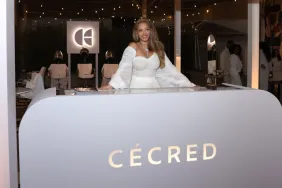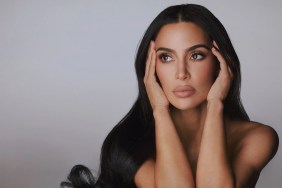Coloring your hair is a versatile beauty accessory and a great way to change up your look. You can add golden highlights to warm up your face or green streaks when you’re in a wild mood. Sometimes the transformative effects can be life-changing. Just ask Jennifer Lopez, who went from plain-Jane Fly Girl to a honey-haired golden goddess in a flash. Or take a cue from color chameleons like Rihanna, who frequently switches up her hues to express her current mood, from blond, badass bombshell to raven-haired adventuress to fiery red mermaid seductresses and more. But before you take the color plunge, there are a few things that you need to know.
According to Aura Friedman, a premier colorist at the Sally Hershberger Downtown Salon who just goes by Aura, the main thing to consider when coloring your hair is the darkness of your mane, how light you want to go, the current condition of your hair and its texture, porosity and density. Porosity is the hair’s ability to retain moisture. Cuticle layers have to lift to let color and moisture in and they have to close back down to keep them in.
Dark Curly or Coarse Hair
Curly and coily hair naturally has a rougher cuticle and is more porous than other textures, making it easier for the strands to absorb color quickly. Curly and coily hair is more fragile and dryer than other hair textures, though. All-over coloring, bleaching and lightening affect the hair cuticle and can cause damage, dryness and dullness. “When you go from very dark hair to very light hair, especially dry, textured, coarse hair, there is going to be some breakage, some damage. The coloring process will change the texture of your hair further. Coarse hair doesn’t originally have a smooth cuticle, so when you dye it, the cuticle is going to be roughened up even more,” explains Aura. With each color application, the damage will worsen. Strands will get frizzier and dryer.
Dark Fine or Thick Straight Hair
Women with dark fine, straight hair have to be cautious as well. Fine hair processes a lot quicker since it’s thinner and less dense than other textures. If you’re not careful, the hair will damage just as easily. “And, if you have really thick straight dark hair, it can sometimes be difficult to lift the color,” says Aura. “In that scenario, you would have to use a stronger lightening solution, along with a strengthening treatment to minimize the damage.”
Light Fine or Thick Hair
If you’re blond and want to go dark, it shouldn’t be a problem since you are just depositing color onto your hair. “Adding color to hair is not damaging, it’s when you are lifting color that there is a problem because you are literally whittling down your hair shaft. That’s how abrasive lightening hair can be,” explains Aura. “But when you’re darkening hair, you’re actually filling the cuticle.” Darkening fine hair coats the hair shaft resulting in thicker hair. But also, since fine hair is less dense and absorbs color pretty easily, you have to use a lighter formula than you would for thicker hair so the dye job won’t look flat.
Processed Hair
If you have processed hair, you should schedule a consultation with a professional colorist. Hair that’s been chemically straightened has been compromised. Japanese straighteners and relaxers permanently change the chemical make-up of the hair. The hair is weak and damaged and may not be able to support additional chemical processes. “Hair that’s been permanently straightened should not be bleached. Bleach is too damaging to the hair. It might even break before it gets to the desired color,” warns Aura. Women with hair that’s been straightened with keratin smoothers might be able to endure the process under the watchful eye of a trusted stylist. “Keratin smoothers are temporary and only coat the hair to flatten it. They do not change the chemical make-up of your hair and as a result are less damaging than the permanent straighteners.”
“Most celebrities who originally have very dark, processed coarse hair, like Beyoncé, wear extensions, hairpieces or wigs. It’s not their real hair that is being colored that blonde,” notes Aura. “Their colorist might dye the base a little bit — that’s why the roots are always darker — and then they blend in the lighter, blond hairpieces or extensions.” However, women with unprocessed, healthy hair that’s not too long can give bleaching a go , just seek out a trusted colorist. “If you have dark hair, don’t try to bleach your hair on your own. Your hair will definitely come out orange,” warns Aura.
[ Next Page: Choosing the Right Hair Color ]








